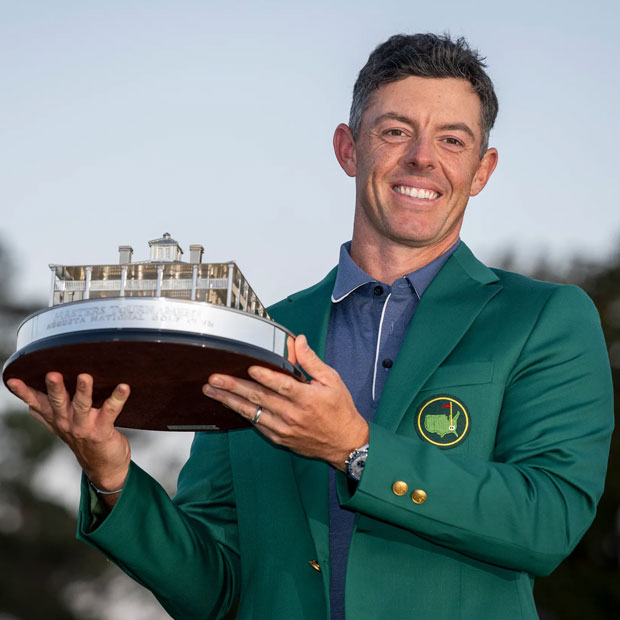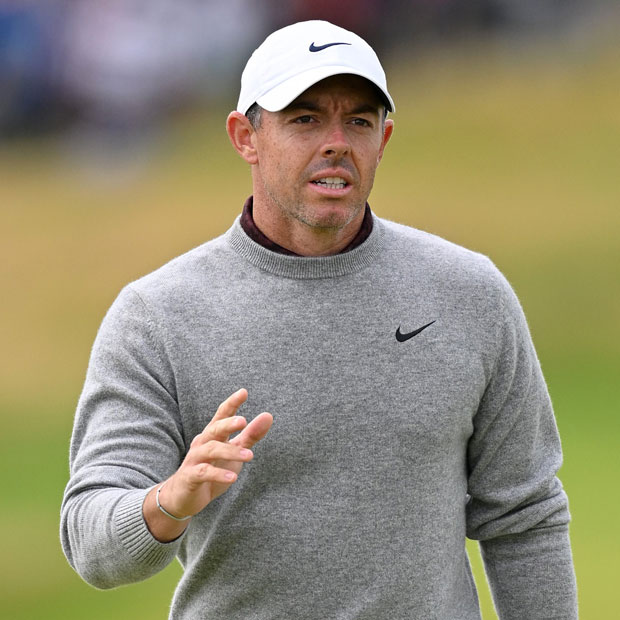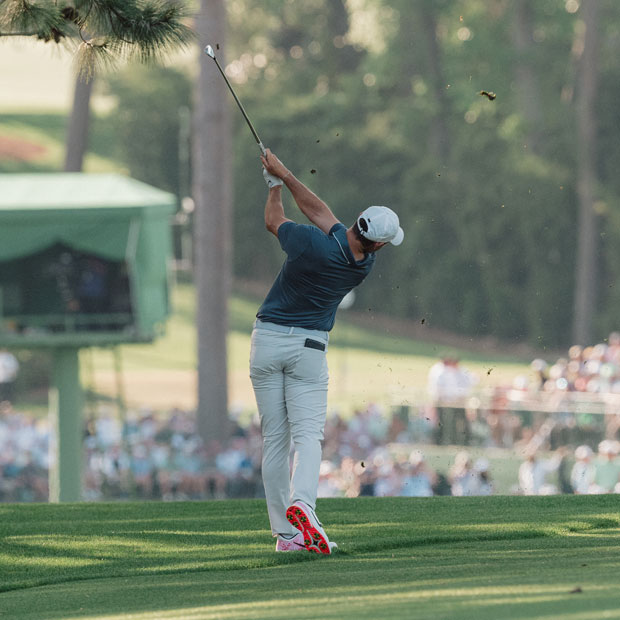Why No. 10 at Riviera Is So Fun to Watch
It’s rare that tee-shot positioning matters on the PGA Tour, but the 10th hole at Riviera Country Club is a rarity


The ball does not roll enough in men’s professional golf.
Well, that’s just my opinion. If the ball rolled more, well-positioned tee shots would have a bigger advantage over errant tee shots, and architectural principles such as hole width and favorable angles would be more of a factor. Certain golf fans, especially those interested in course design, would prefer for pro golfers to reap benefits from intelligent positioning off the tee. I am in that camp! But that is not the reality in most modern, aerial golf.
On average on the PGA Tour, players with an advantageous angle to the flag outperform players with a poor angle by roughly 0.10-0.15 strokes with long irons from the fairway. With a wedge from the fairway, players with an advantageous angle have almost zero advantage over those with a poor angle.
These numbers shouldn’t be surprising. From good lies, professional golfers hit the ball so high and with so much spin that their shots don’t roll much once they hit the ground. Also, from longer distances, few shots end up within 10 feet of the hole, and approaches to 20 feet versus 30 feet have similar scoring outcomes. Overall, angles do not matter much on approach shots in PGA Tour golf.
However, from around the green, angles do make a difference. When golfers leave themselves ample room between the edge of the green and the flag, they will outperform those who are short-sided. Especially from the rough, players cannot spin a shot enough to overcome the disadvantage of a short-sided angle. Chipping the ball to nine feet is unlikely to result in an up-and-down, and that’s often the outcome of being short-sided in the rough.
Therefore, on most non-drivable holes on the PGA Tour, a player’s scoring expectation is driven more by lie than by positioning off the tee. But on some drivable holes on tour, scoring expectation is driven by both lie and positioning. These are the holes that reward precision most.
Hole 10 at Riviera Country Club, host of this week’s Genesis Invitational, is a prime example.
Measuring just over 300 yards, No. 10 at Riviera offers a unique test. A fairway bunker sits about 245 yards from the tee on the left side of the fairway. Beyond that is a tiny sliver of green, protected by some of the most penal green-side bunkers on the PGA Tour.
Since the green is tough to hit, particularly when it’s firm, few players will stay short of the left fairway bunker off the tee because of how brutal the wedge shot is from there. Justin Thomas, one of the best wedge players on tour, is one of the few players who consistently elects not to blast it over the fairway bunker on No. 10.
So firing it directly at the green is the correct strategy for most players, right? Refreshingly, it is not that simple. If you’re in a green-side bunker here, you have a ridiculously hard recovery. For instance, in order to hit his bunker shot to seven feet last year, 2021 champion Max Homa had to execute one of the best short-game shots of the entire calendar year:
Difficulty Level: 10 😲
Result: Birdie 🙌
Definitely deserving of a fist bump, @MaxHoma23.#QuickHits pic.twitter.com/pCOhpfJw0d
— PGA TOUR (@PGATOUR) February 21, 2021
Since the green-side bunkers present such a stiff challenge, the majority of the Genesis Invitational field aims just left of the front of the green and into the left rough. Fewer than 2% of tee shots find the green off the tee, and typically fewer than 40% of tee shots find the fairway. Many players end up with a delicate chip from the rough, which is a difficult shot to stop on the green. The range of potential outcomes is wide, and the differences between approach angles can be profound.
Okay, enough theory. Let’s look at some actual shots. The plot below displays scoring by tee-shot positioning on No. 10 from the second round of last year’s Genesis Invitational. For context, the hole’s scoring average on Friday last year was 3.9.

As you can see, tee shots that miss right of the green to this hole location yield far more bogeys than birdies. Shots that miss too far left of the fairway encounter tree trouble and can result in big numbers as well. The best outcomes tend to come from very specific places: the front left of the green, and maybe a bit long and left. In other words, No. 10 at Riviera is a rare instance on the PGA Tour in which positioning off the tee is actually a big deal.
◊
There was a time when I disliked this hole and dismissed the popular notion that it is one of the best short par 4s in professional golf. After all, it does not present elite players with many options off the tee, and nowadays nearly every member of the Genesis field employs the same strategy.
But the fact is, in today’s pro game, precision off the tee is rarely as critical as it is on the 10th hole at Riviera. That’s because the golf ball rolls very little when struck by a top player in the world from a good lie, and not even Riviera, with its firm greens, can prevent that. So No. 10 is a fun opportunity to see what happens when driving the ball the right distance and on the correct line is paramount.
So when you are watching the Genesis Invitational this week, pay little attention to the “Going for It” statistics that the telecast is likely to bring up. Instead, consider where exactly the players are on their second shots, and how different it is to be, say, 15 yards short and left versus 15 yards long and left. It’s a rare case on the PGA Tour in which these distinctions matter. And that is the appeal of the hole.
Joseph LaMagna is the founder of Optimal Approach Golf, a golf intelligence company working with tour players to improve their performance.
Leave a comment or start a discussion
Engage in our content with thousands of other Fried Egg Golf Club Members
Engage in our content with thousands of other Fried Egg Golf Members
Get full access to exclusive benefits from Fried Egg Golf
- Member-only content
- Community discussions forums
- Member-only experiences and early access to events











Leave a comment or start a discussion
Lorem ipsum dolor sit amet, consectetur adipiscing elit. Suspendisse varius enim in eros elementum tristique. Duis cursus, mi quis viverra ornare, eros dolor interdum nulla, ut commodo diam libero vitae erat. Aenean faucibus nibh et justo cursus id rutrum lorem imperdiet. Nunc ut sem vitae risus tristique posuere. uis cursus, mi quis viverra ornare, eros dolor interdum nulla, ut commodo diam libero vitae erat. Aenean faucibus nibh et justo cursus id rutrum lorem imperdiet. Nunc ut sem vitae risus tristique posuere.